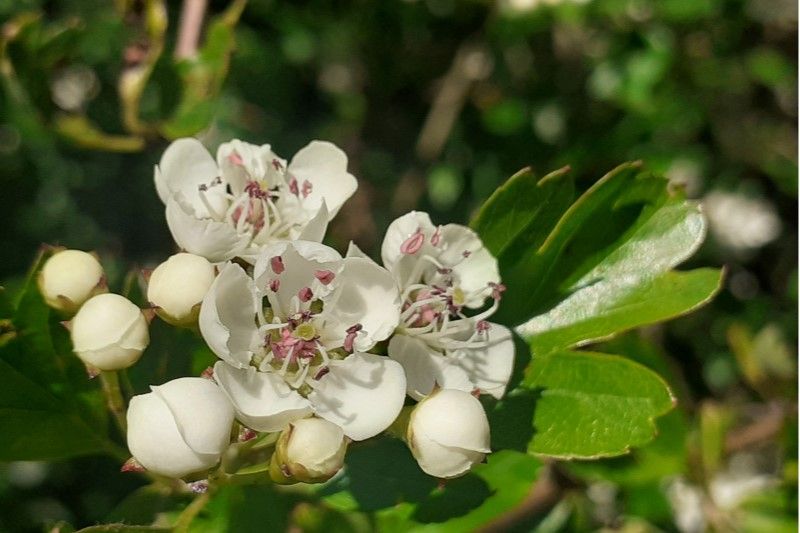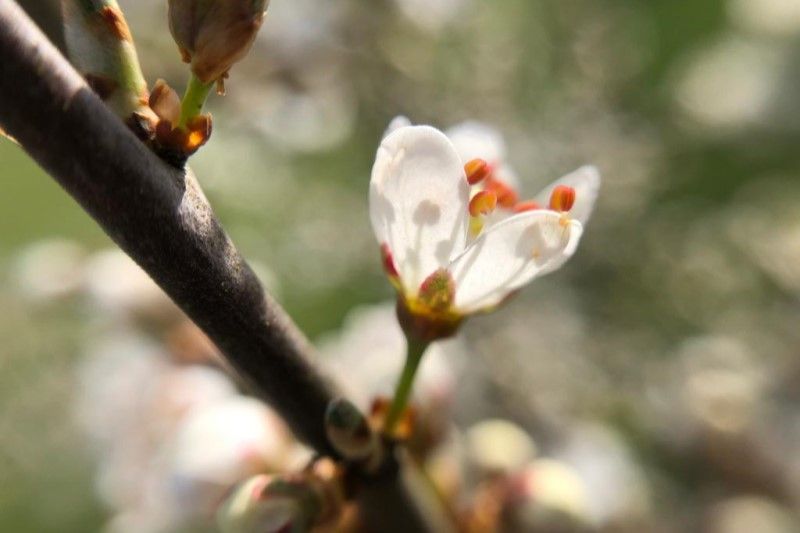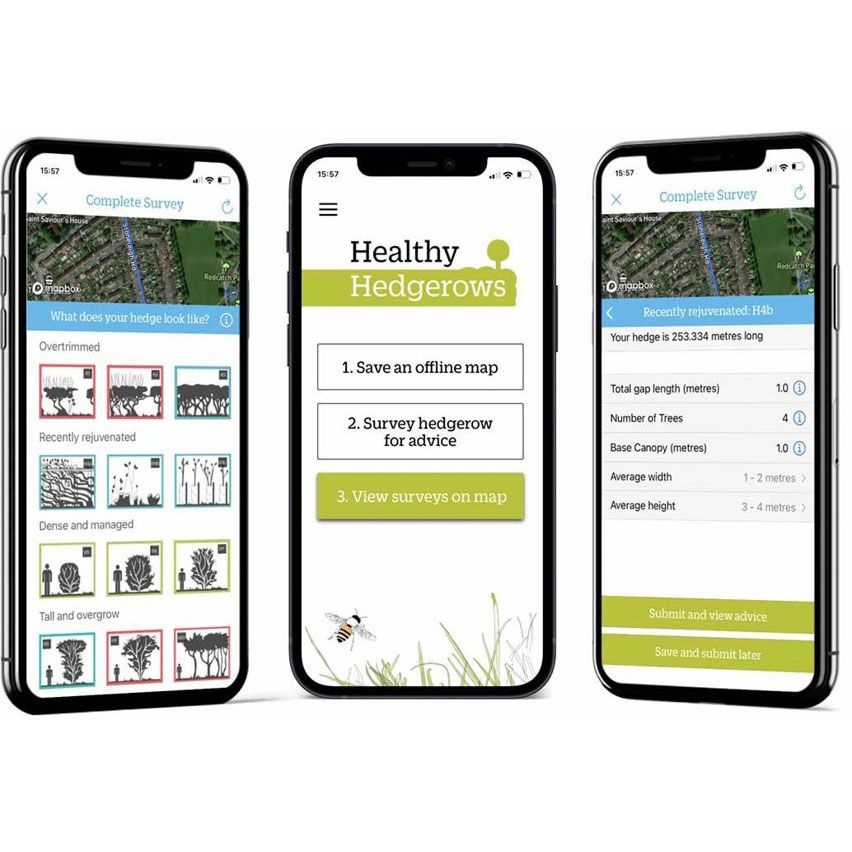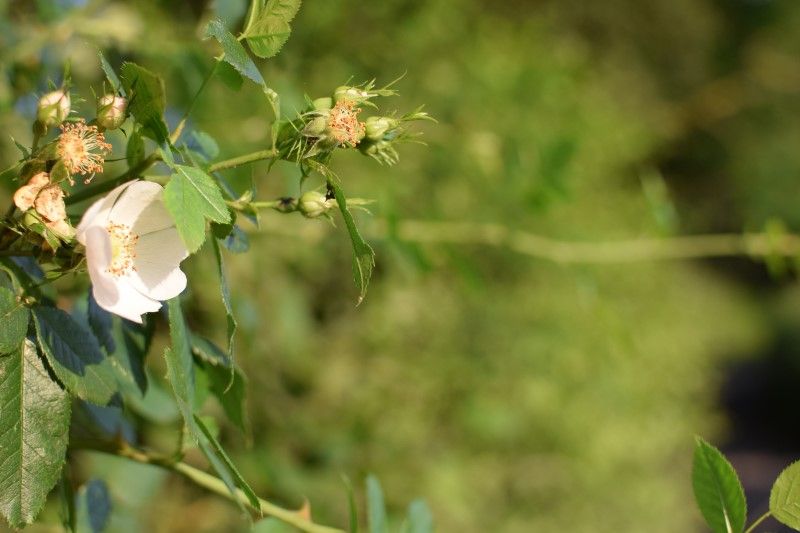The inescapable hedgerow blossom and emerging fresh, vivid green leaves make for rewarding hedgerow walks. Watching a hedge slowly wake up is a great way to notice how many species it holds. Honeysuckle is often first to emerge, joining the ever-steady holly in leaf. Next come the thorns. One easy way of telling hawthorn and blackthorn apart from a distance is that blackthorn, which flowers early, blossoms on bare twigs, whereas hawthorn blooms while in leaf.


Flowers for pollinators
Hedgerows can be an exceptional source of flowers for our pollinating insects. 70% of the country is agricultural land so hedgerows, as they wind through the landscape, gilt the edges with froths of flowers, humming with activity.
Crops only flower for a couple of weeks a year, so it’s field margins, hedges and hedgerow trees that keep important pollinators fed for the rest of the year. Mixed species hedges provide shrubs that flower at different times throughout the year. This is called a blossom sequence, and it’s really important for sustaining pollinator communities.
The blossom sequence starts in spring
The blossom sequence starts in early spring with cherry plum and goat willow, before moving on to blackthorn, crab apple and hawthorn. This is an essential time for bumblebee colony development.
In summer, the floral margins and hedge climbers such as honeysuckle, wild rose and bramble take the mantle. As too do plants in hedge ditches, such as meadowsweet, which may also be better able to continue providing forage during summer droughts. Later in the year ivy, one of the last good sources of forage, will be a-buzz with insects on a sunny day.
Buzz cuts cut the buzz
Of course hedge management makes a big difference; even the most diverse hedge may be bare of blossom at this time of year if it’s cropped to the same height each year. Buzz cuts cut the buzz. For these poor hedges, it’s only hedgerow trees that deliver vital floral forage.
It’s not only hedgerow flowers that pollinators use. Hedges also provide undisturbed ground and trees for pollinator nests. Whilst other habitats also support pollinators, the very nature of hedgerows means they are located in and amongst farmed fields, so even those pollinators that only fly 100m or so will be able to travel far enough to pollinate crops such as oilseed rape and field beans.

The Healthy Hedgerows survey provides instant feedback about the health of the hedge and bespoke management advice. The data that you contribute helps us to understand the overall health of hedgerows at a national scale so that we are able to direct our conservation work. Learn more:

